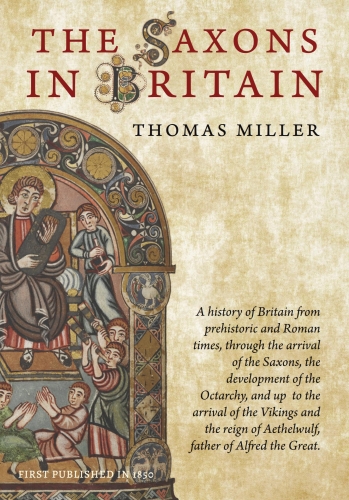
AMAZON PAPERBACK | US | UK | Germany | France | Japan | Canada | Australia
PAPERBACK ELSEWHERE | Book Depository
EBOOK HERE | PDF
DOWNLOAD SAMPLE PDF
A history of Britain from prehistoric and Roman times, through the arrival of the Saxons, the development of the Octarchy, and up to the arrival of the Vikings and the reign of Aethelwulf, father of Alfred the Great.
Before the Saxons
- The Dawn of History
- The Ancient Britons
- The Druids
- Landing of Julius Cæsar
- Caractacus, Boadicea, and Agricola
- Departure of the Romans
- Britain after the Roman Period
The Saxon Invasion
- The Ancient Saxons
- Hengist, Horsa, Rowena, and Vortigern
- Ella, Cerdric, and King Arthur
- Establishment of the Saxon Octarchy
- The Conversion of Ethelbert
- Edwin, King of the Deiri and Bernicia
- Penda, the Pagan Monarch of Mercia
- Decline of the Saxon Octarchy
- Offa the Terrible
- Egbert, King of All the Saxons
Appendices
- Anglo-Saxon Culture
- Religion
- Government and Laws
- Literature
- Architecture, Art, and Science
- Costume, Manners, Customs, and Everyday Life
This is a new edition of part of the volume History of the Anglo-Saxons, originally published in 1850.
About the author
THOMAS MILLER was born in Gainsborough, Lincolnshire, the son of George Miller, an unsuccessful ship-owner who deserted his wife and two sons in 1810. Thomas grew up in Sailors Alley, and one of his childhood friends was the future poet and journalist Thomas Cooper. He attended the White Hart Charity School. Although he left school at nine, he became a voracious reader. His love of the countryside was reinforced by summers spent on his grandfather’s farm.
Miller found work as a ploughboy, then as a shoemaker’s apprentice, but was released from his indentures when he threw ‘an iron instrument’ at his vicious and tyrannical master. He was then apprenticed as a basket-maker to his stepfather, and when he had done his time, moved to Nottingham in 1831 to set up his own basket-making business. There he published his own first writings Songs of the Sea Nymphs (1832)
After moving to London he was befriended by Lady Blessington and by Samuel Rogers, and for a time engaged in business as a bookseller, but was unsuccessful and then devoted himself exclusively to literature, producing over 45 volumes, including novels, in which he successfully delineated rural characters and scenes. Among them were Royston Gower (1838), Gideon Giles the Roper, Rural Sketches and Pictures of Country Life. He contributed a series to the run of penny dreadfuls entitled Mysteries of London, which depicted urban crime.
Although Miller attracted some patronage and some sums from the Royal Literary Fund, he was often in financial need. He appealed directly to Charles Dickens for assistance in 1851, but Dickens declined and wrote to his friend Bulwer Lytton, “I fear he [Miller] has mistaken his vocation.”
Miller had a wife and four children: Henry, George, Emma and Ellen. He died of a stroke at his home at 24 New Street, Kensington, on 24 October 1874 and was buried in West Norwood Cemetery. He was survived by one of his sons and his two spinster daughters.

Be the first to comment